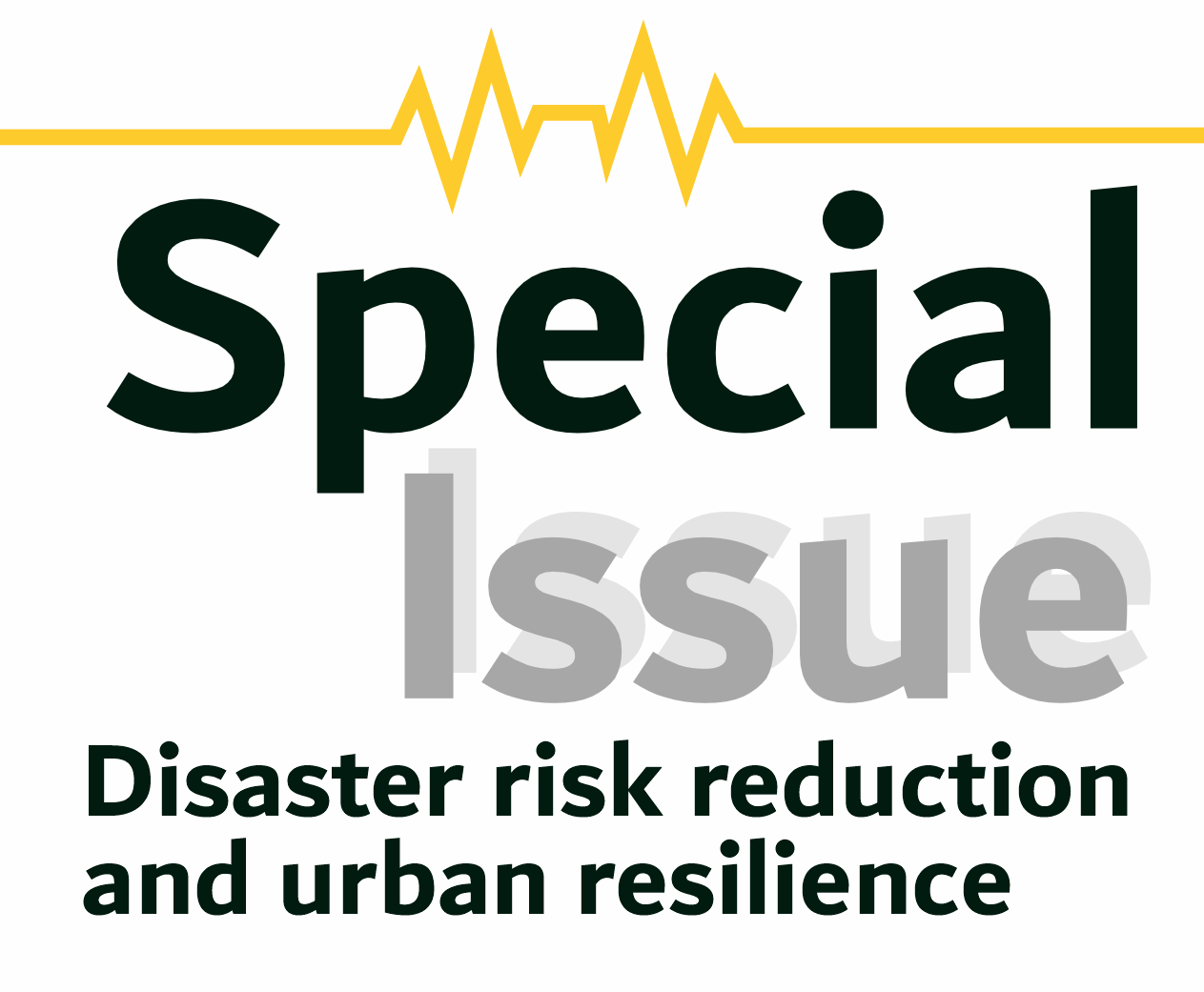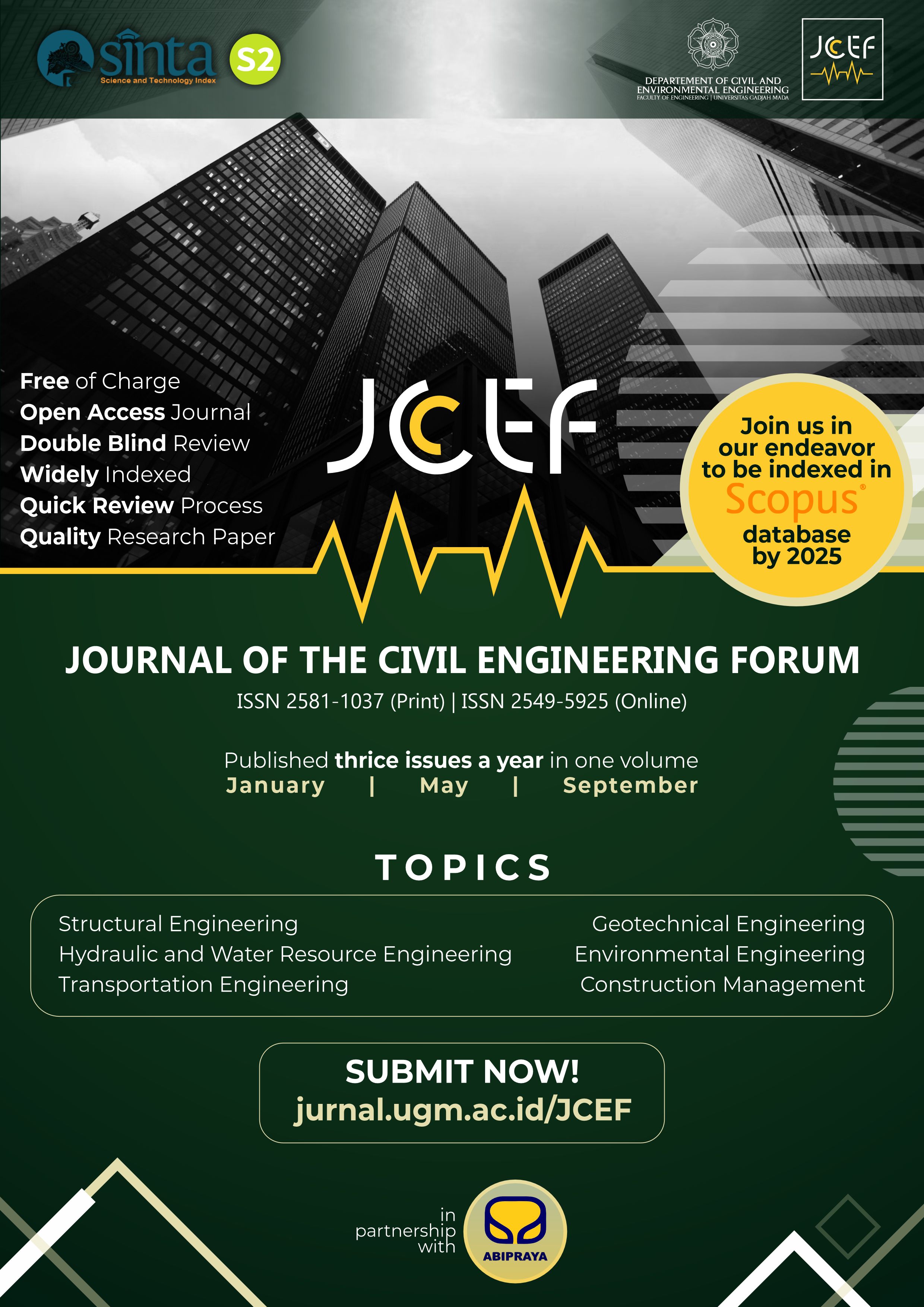Clarification of Watershed Recharge in Cisadane River Basin through Ground Test
Abstract
KARDAS is an area used to protect groundwater from its usage as a water source. Meanwhile, the recharge zone is normally determined in Indonesia through the Regulation of the Ministry of Public Works and Housing (Permen PUPR) Number 10/2015 with the focus on certain physical parameters such as soil texture, land use/land cover, annual rainfall, and slope provided with relative potency values from 1 which represents very low to 5 which is very high. This system was used to review four parameters in a small grid unit of 1 km2 each in the Cisadane River Basin with a 1,545.47 km2 area divided into 1,710 units and the most dominant grid placed at the middle part while the rest are at the edge of the basin. This research focused on the clarification methods to determine the potential recharge variables for this river basin in order to serve as a reference for the potential recharge zone in Indonesia. The KARDAS map obtained showed a very high potential with a score of 17-20 covering 183 km2 (10.45%), high potential with a score of 13-16 involving 943 km2 (56.96%), medium potential with 584 km2 (32.59%), and 0 small potential. Moreover, KARDAS desk study results were clarified using the field or ground test to ensure accuracy and this involved using 14 units as samples to represent the five potentials through temporary quantitative cumulative scores. The desk study or secondary data results were found to be only 50% accurate with a limited point survey but the application of qualitative perception showed that only 1 point does not match with the medium and high potentials this indicates the accuracy was 93% which is categorized to be good.
References
Al-abadi, A. & Al-shamma, A., 2014. Groundwater Potential Mapping of the Major Aquifer in Northeastern Missan Governorate, South of Iraq by Using Analytical Hierarchy Process and GIS. Journal of Environment and Earth Science, 4(10), pp. 125–150.
Al-Ruzouq, R., Shanableh, A., Merabtene, T., Siddique, M., Khalil, M.A., Idris, A.E. & Almulla, E., 2019. Potential groundwater zone mapping based on geo-hydrological considerations and multi-criteria spatial analysis: North UAE. Catena 173 (December 2017), pp. 511–524. doi: 10.1016/j.catena.2018.10.037.
Hidayat, D.P.A., Darsono, S. L. W. & Farid, M., 2021a. Development model of watershed recharge zone based on Indonesia regulation in Cisadane Watershed-West Java, Indonesia. IOP Conference Series: Earth and Environmental Science, 737(1). doi: 10.1088/1755-1315/737/1/012078.
Hidayat, D.P.A., Darsono, S. L. W. & Farid, M., 2021b. Modeling of Potential Recharge Zone Using Geographical Information System Based on Indonesia Regulation and Water Balance Model. International Journal of GEOMATE, 20(79), pp. 147–154. doi: 10.21660/2021.79.j2037.
Hutti, B., 2011. Identification of Groundwater Potential Zone using Geoinformatics in Ghataprabha basin, North Karnataka, India. International Journal of Geomatics and Geosciences, 2(1), pp. 91–109.
Yolcubal, I., Brusseau, M.L., Artiola, J.F., Wierenga, P. & Wilson, L.G., 2004. Enviromental Physical Properties and Processes. Enviromental Monitoring and Characterization, p. 207. doi: 10.4213/tmf1202.
Kementerian ESDM Republik Indonesia., 2018. Pedoman penetapan zona konservasi. Peraturan Menteri ESDM No 31 Tahun 2018.
Kementerian Pekerjaan Umum dan Perumahan Rakyat., 2015. Tata cara penyusunan pola pengelolaan sumber daya air. Peraturan Menteri PUPR No 10 Tahun 2015
Nampak, H., Pradhan, B. & Abd, M., 2014. Application of GIS based data driven evidential belief function model to predict groundwater potential zonation. Journal of Hydrology, 513, pp. 283–300. doi: 10.1016/j.jhydrol.2014.02.053.
Pinto, D. & Shrestha, S., 2017. Delineation of groundwater potential zones in the Comoro watershed, Timor Leste using GIS, remote sensing and analytic hierarchy process (AHP) technique. Applied Water Science, pp. 503–519. doi: 10.1007/s13201-015-0270-6.
Prasetya, D.A., 2016. Prediksi cadangan air tanah di daerah aliran sungai (DAS) Cisadane. Jurnal teknik sipil dan lingkungan, 1(2), pp. 59–68.
Ritchey, E.L., 1979. Determining soil texture by feel. Journal of Agricultural Education, 8, pp. 54–55.
Saha, A., 2017. Groundwater Potential Zone Identification using Remote Sensing and GIS Techniques - A Case Study of Karwi Block Area, Uttar Pradesh, India. IOSR Journal of Applied Geology and Geophysics, 5(5), pp. 43–51. doi: 10.9790/0837-0505024351.
Saputra, A., 2015. Analisis penyimpangan pada pengukuran kemiringan lereng penambangan PT. Antam (Persero) Tbk UBPN Sultra Provinsi Sulawesi Tenggara. Jurnal Geomine, 3(1), pp. 189–195. doi: 10.33536/jg.v3i1.24.
Singh, S. K., 2018. Potential groundwater recharge zones within New Zealand. Geoscience Frontiers, pp. 1–9. doi: 10.1016/j.gsf.2018.05.018.
Thapa, R. & Gupta, S., 2017. Assessment of groundwater potential zones using multi-influencing factor ( MIF ) and GIS : a case study from Birbhum district, West Bengal. Applied Water Science, 7(7), pp. 4117–4131. doi: 10.1007/s13201-017-0571-z.
Copyright (c) 2022 The Author(s)

This work is licensed under a Creative Commons Attribution-ShareAlike 4.0 International License.
Copyright is granted to authors for the purpose of providing protection for articles written to describe experiments and their results. JCEF will protect and defend the work and reputation of the author and are also willing to address any allegations of violation, plagiarism, fraud, etc. against articles written and published by JCEF. JCEF is published under the terms of the Creative Commons Attribution-ShareAlike 4.0 International License (CC BY-SA 4.0). The author holds the copyright and assigns the journal rights to the first publication (online and print) of the work simultaneously.





